- Submissions

Full Text
Research & Investigations in Sports Medicine
Interpreting Hamstring Injuries and Intervention Strategies in Elite Soccer
Alexander R Calder*
Houston Dynamo FC, USA
*Corresponding author:Alexander R Calder, Houston Dynamo FC, Houston, Texas, 77045, USA
Submission: April 17, 2023;Published: May 15, 2023

ISSN: 2577-1914 Volume9 Issue3
Introduction
With hamstring being the most injured site in soccer, practitioners are constantly investigating the latest methodology around protecting this muscle group [1,2]. With a holistic approach, it is important for practitioners to begin investigations by identifying the mechanisms of the Hamstring Muscle group. Specifically, what does the hamstring muscle group consist of and what are the actions of the posterior chain. The Hamstring Muscle complex can be broken down into 4 main groups; the Semitendinosus (ST), Semimembranosus (SM), Bicep Femoris Long Head (BFlh), and BICEP FEMORIS SHORT HEAD (BFsh) [3]. Specifically, the SM, BFlh, and ST all cross the hip and knee joints. The hamstring group (along with other muscles) play a role in knee flexion, hip extension, and internal and external rotation, when concentrically contracting.
When examining the injury occurrence in top-flight soccer, the Bicep femoris group (BF; BFlh and BFsh) account for 84% of total injuries, while the semimembranosus and semitendinosus account for 12% and 4%, respectively [4]. Furthermore, it must be noted that when examining these groups, architectural qualities such as cross-sectional area, volume, fascicle length, and pennation angle can be manipulated through exercise. Therefore, these architectural qualities vary between each individual/player.
Once understanding the basic mechanisms of the hamstring muscle group, the natural progression of investigation is the segmentation of running mechanics, specifically in elite soccer players. Given the chaotic nature of elite soccer, if imperative to understand the role hamstrings play with different movement patterns. More specifically, the demands of each muscle group during different phases of running.
Acceleration
During the acceleration phase, the body is leaning forward and the player’s centre of gravity (torso) is well ahead of their base of support (feet), creating a positive shin angle and strong triple extension when making ground contact. In soccer, players are often trying to accelerate with maximal force in order to beat their opponent to the ball or target zone. To put into perspective, at the elite level in Europe, players have been recorded accelerating 90.7 times per match, and upward of 115 times, at a threshold of>1.0m·s-2 [5,6]. However, when we look specifically at higher thresholds (>3.0m·s-2), players have shown to produce 26.5 - 34.9 acceleration exposures throughout a 90-minute match, dependant on position [7]. The majority, roughly 48%, of high acceleration outputs are when players are at a starting velocity of 0-1.0m·s-1, and have resulted in around 70 seconds between bouts [6-8]. Therefore, we, as practitioners, must understand how the hamstring group contributes to such great outputs throughout the game.
Examining the acceleration phase of a maximum sprint, the activation demand for the ST is higher than the BF in the early-swing and first half of the mid-swing phase of the gait cycle [9]. Specifically, the loading phase has shown to result in a 66% increase in activity in the medial hamstrings (SM,ST) as opposed to a 34% increase with the BF [10].
Maximum speed
Compared to the acceleration position of the body, when players are reaching their top speed, their anterior tilt angle of the pelvis, and hip flexion angle are significantly smaller. The hip and knee flexion angles are also significantly different in the maximum speed position, due to the foot strike angle of the upwards posture [11]. Although elite-level players may only be exposed to their near-maximum (>90% of their individual speed) 1-3 times per 90-minute game [12], there is a large stretch in the muscle-tendon unit of the hamstrings [11,13]. Due to different angles at the hip and knee, a greater stretch is required for the BF compared to the ST and SM during the upright maximum speed phase [13]. Conversely, it is of note that the acceleration phase also demands a musculotendon strength of the hamstring group, suggesting that the SM and BF were stretched more in the late stance phase of an acceleration compared to the upright maximum speed positions [11].
Although there may be a greater stretch in the BF, compared to the ST and SM in the maximum speed phase, the activation of the ST is greater than the BF from the late-stance to the end of the mid-swing [9]. However, during the terminal swing phase, the BF activity still increases around 67%, compared to 37% in the MH group [10].
To summarise, both the acceleration and maximum speed outputs, demanding regularly in soccer games, require large stretch and activation of the hamstring group. Therefore, the evidence suggests that both forms of sprinting increase the elongation load of the hamstrings, thus, resulting in an increased risk of injury in games.
Why do Hamstring Injuries still Occur Frequently in Elite Soccer?
Given that we know hamstring are the most common softtissue injury in elite soccer [14], researchers have recognised a 4% increase in hamstring injuries across 13 years of soccer in Europe [1]. Furthermore, across 18 years or European soccer, an overall rate of injury has decreased in training and matches [15]. However, muscle injury rates noted no change in this longitudinal study. Positively, it was noted that re-injury rates and number of player absences has decreased.
The game
It has been well documented that the game has evolved (as has sport science) over the past few decades [16]. We used to see players go into games with no-warm up, no monitoring, and at times, very little training regimes.
Research indicates that over 7 seasons in the English Premier League (from 2006-2013), players have incrementally demonstrated greater physical outputs each year [17]. Although the total distance covered showed small increases, ~2% across 7 seasons, the high-intensity running distances increased 24-36% (depending on position). Furthermore, overall sprint distances increased by roughly 50% from the 2006 season until 2013. Therefore, we can suggest that the speed of the game is increasing. Thus, creating a greater physical demand (especially posteriorly) for players if they plan to compete at the elite level. Researchers have even suggested that “a typical 25-player squad can thus expect about seven hamstring strains each season. It can be speculated that the high risk of hamstring strain reflects the high intensity of modern professional football” [18].
Types of injury
Hamstring injuries can be broken down into two types of incidence categories; stretching and sprinting (Table 1) [19,20]. Out of these sub-categories, we know that the “predominant hamstring injury mechanism in football occurs during high-speed running or acceleration efforts” [21].
Table 1: Two incident categories surrounding hamstring injuries in elite soccer.

Interventions
Intervention strategies for minimising hamstring injuries in elite soccer are some of the most researched areas to date. However, putting research into practise seems to be the most discussed topic [22]. Therefore, the greatest question to be asked is, ‘What can we, as practitioners, do to mitigate the risk of hamstring injury in soccer?’
Identifying the controllables within the elite soccer environment is the initial step to determine invention strategies (Table 2). IE. What are the modifiables and non-modifiables within hamstring injuries within your cohort (Table 3) [23,24].
Table 2: Players’ attributes in determining interventions strategies.
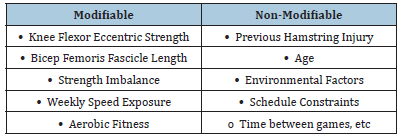
Table 3: Modifiable attributes for minimising hamstring injury risk in Elite Soccer.

Timmins has illustrated over the past decade that the biggest hamstring injury risk factors for running-based athletes are short and weak fascicle lengths of the BF [24]. Furthermore, Timmins also investigated how quickly we can make positive adaptations in our players’ hamstring architecture [25]. Exposing players to eccentric-biased (or only) activities is the quickest way to increase fascicle length as soon as 2 weeks.
Exercise selection
The Nordic: One of the biggest hamstring injury studies has already shown us the power of the Nordic exercise, siting that hamstring injuries can be reduced by ~50% with the inclusion of this exercise in a regular regime [26]. Although the Nordic exercise has been identified as an incredibly effective antidote, it isn’t the only route for desired muscular adaptations. In fact, there are still many practitioners not implementing Nordics into their program, due to “muscle soreness in players” [27].
Perhaps another reason for avoiding Nordics is the lack of consist prescription advice in the literature. For example, previous research has suggested 3 sets of 8-10 reps three times per week as a prescription [28]. From a practical perspective, this just isn’t realistic. Some more up-to-date research has looked at the minimaleffective- dosage in prescribing Nordics for running-based athletes to ensure wanted adaptations are in place. On study suggests that 8 reps per week can maintain BF fascicle length, as long as the athlete has been exposed to an eccentric-biased overall prior [29]. Another study went as low as 4 reps of Nordics per week, but paired it with 6 reps of a modified stiff-leg deadlift [30].
What else? As forementioned, practitioners may seek some other exercises available that yield positive adaptations to reduce the risk of hamstring injuries. Focusing on the joints of interest, it is imperative that pracitioners include both Hip-dominant and knee-dominant exercises. The understanding of exercise selection based on hip and knee dominant exercises have been previously investigated.
Bourne and crew compared the Nordic exercise with a 45° hip extension exercise and how they both affect hamstring strength and architecture [31]. After 10 weeks of training, both groups significantly improved eccentric knee flexor strength, as well as BF fascicle length, compared to a control group. However, the Nordic hamstring group took a slight advantage in the BF fascicle length category compared to the hip extension group. Additionally, Nordics resulted in a greater BFlh volume, whereas the ST saw its greatest increase in volume in the hip extension group.
Alongside adding appropriate hip extension exercises one’s regime, practitioners may have players who cannot complete a complete Nordic with integrity. Perhaps another reason why practitioners are also shying away from the exercise. Therefore, it is vital that practitioners develop an exercise progression for the knee-flexor group, with Nordics being the end goal.
Exercise Continuums
Understandably, there are various ways to develop an exercise selection menu. Given the forementioned information (Figure 1-4), these basic templates are purely based on the evidence-based criteria mentioned above (Table 4 & 5).
Figure 1:Double leg glute bridge slide out.
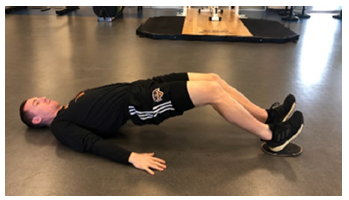
Figure 2:Single Leg slide out on TRX.
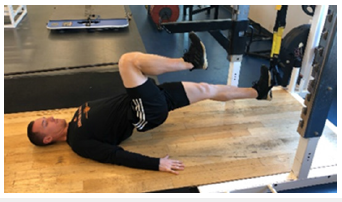
Figure 3:BB RDL (Eccentric Only).
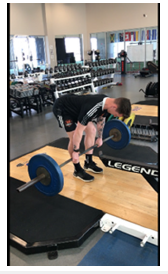
Figure 4:BB SL RDL (Eccentric Only).
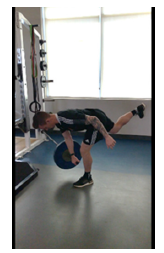
Table 4:Knee flexor exercise continuum.

Table 5: Hip extension exercise continuum..

Conclusion
Practitioners working in elite soccer are constantly investigating ways to enhance current return-to-play protocols. As the most injured site in elite soccer, the hamstring muscle group seems to cause the most burden for soccer organizations. Therefore, having a thorough understanding of the mechanisms and role that hamstring play in elite soccer is imperative. Developing preventative strategies as well as an exercise continuum can help practitioners yield desired adaptations in order to increase overall robustness of the hamstring muscle group [32]. It is recommended that practitioners use a holistic approach, including regular kneeflexor eccentric exercises, hip-extension eccentric exercises, and sprint exposures regularly as part of their prescriptions. Having a continuum within one’s performance department allows for more effective prescriptions, and potentially minimizing time lost due to hamstring injuries.
- Ekstrand J, Waldén M, Hägglund M (2016) Hamstring injuries have increased by 4% annually in men's professional Football, since 2001: A 13-year longitudinal analysis of the UEFA Elite Club injury study. British Journal of Sports Medicine 50(12): 731-737.
- Ekstrand J, Hägglund M, Waldén M (2011) Epidemiology of muscle injuries in professional Football (Soccer). the American Journal of Sports Medicine 39(6): 1226-1232.
- Woodley SJ, Mercer SR (2005) Hamstring Muscles: Architecture and Innervation. Cells Tissues Organs 179(3): 125-141.
- Ekstrand J, Lee JC, Healy JC (2016) MRI findings and return to play in Football: A prospective analysis of 255 hamstring injuries in the UEFA Elite Club Injury Study. British Journal of Sports Medicine 50(12): 738-743.
- Ingebrigtsen J, Terje Dalen, Geir HH, Barry D, et al. (2015) Acceleration and sprint profiles of a professional elite Football team in match play. Eur J Sport Sci 15(2): 101-110.
- Bradley PS, Miche DM, Dan P, Olsen P, Bill S, et al. (2010) High-intensity activity profiles of elite soccer players at different performance levels. The Journal of Strength & Conditioning Research 24(9): 2343-2351.
- Oliva LJM, Victor F, Peter K, Jose MM (2020) Acceleration and sprint profiles of professional male Football Players in relation to playing position. Plos one 15(8): e0236959.
- Varley MC, Aughey RJ (2013) Acceleration profiles in elite Australian soccer. International Journal of Sports Medicine 34(01): 34-39.
- Higashihara A, Yasuharu N, Takashi O, Toru F (2018) Differences in hamstring activation characteristics between the acceleration and maximum-speed phases of sprinting. Journal of Sports Sciences 36(12): 1313-1318.
- Silder A, Thelen DG, Heiderscheit BC (2010) Effects of prior hamstring strain injury on strength, flexibility, and running mechanics. Clinical Biomechanics (Bristol, Avon) 25(7): 681-686.
- Higashihara A, Yasuharu N, Kazumzsz T, Toru F (2015) Effects of forward trunk lean on hamstring muscle kinematics during sprinting. Journal of Sports Sciences 33(13): 1366-1375.
- Buchheit M, Ben MS, Karim H, Mathieu L (2021) Occurrences of near-to-maximal speed-running bouts in Elite Soccer: Insights for training prescription and injury mitigation. Sci Med Footb 5(2): 105-110.
- Thelen DG, Elizabeth SC, Dina MH, Thomas MB, Stephen CS, et al. (2005) Hamstring Muscle kinematics during treadmill sprinting. Med Sci Sports Exerc 37(1): 108-114.
- Bahr R, Clarsen B, Ekstrand J (2018) Why we should focus on the burden of injuries and illnesses, not just their incidence. British Association of Sport and Exercise Medicine 52(16): 1018-1021.
- Ekstrand J, Armin S, Hakan B, Roald B (2021) Injury rates decreased in men’s professional Football: An 18-year prospective cohort study of almost 12 000 injuries sustained during 1.8 million hours of play. British Journal of Sports Medicine 55(19): 1084-1091.
- McCall A (2021) Research in Football: Evolving and lessons we can learn from our mistakes. Sci Med Footb 5(2): 87-89.
- Bush M, Chris B, David TA, Bob H, Paul SB (2015) Evolution of match performance parameters for various playing positions in the English Premier League. Human Movement Science 39: 1-11.
- Ekstrand J, Hägglund M, Waldén M (2011) Injury incidence and injury patterns in professional Football: The UEFA injury study. British Journal of Sports Medicine 45(7): 553-558.
- Askling CM, Malliaropoulos N, Karlsson J (2012) High-speed running type or stretching-type of hamstring injuries makes a difference to treatment and prognosis. British Association of Sport and Exercise Medicine 46(2): 86-87.
- Timmins R, John H, Risto MT, Alexander M, Alex C (2022) Return to play. 1st (edn), Peak Performance for Soccer. Routledge, UK, pp. 223-258.
- Schuermans J, Damien van T, Danneels L, Erik W (2014) Biceps femoris and semitendinosus--teammates or competitors? New insights into hamstring injury mechanisms in male Football Players: A muscle functional MRI study. British Journal of Sports Medicine 48(22): 1599-1606.
- Buckthorpe M, Steve W, Stewart BL, Gianni N, Thomas S, et al. (2019) Recommendations for hamstring injury prevention in elite Football: Translating research into practice. British Journal of Sports Medicine 53(7): 449-456.
- Buckthorpe M, Steve W, Stewart BL, Gianni N, Thomas S, et al. (2019) Recommendations for hamstring injury prevention in Elite Football: Translating research into practice. British Journal of Sports Medicine 53(7): 449-456.
- Timmins RG, Matthew NB, Anthony JS, Morgan DW (2016) Short biceps femoris fascicles and eccentric knee flexor weakness increase the risk of hamstring injury in Elite Football (Soccer): A prospective cohort study. Br J Sports Med 50(24): 1524-1535.
- Timmins RG, Joshu DR, Joel P, Nirav M, Anthony JS (2016) Architectural Changes of the Biceps Femoris Long Head after Concentric or Eccentric Training. Med Sci Sports Exerc 48(3): 499-508.
- Van Dyk N, Behan FP, Whiteley R (2019) Including the Nordic hamstring exercise in injury prevention programmes halves the rate of hamstring injuries: A systematic review and meta-analysis of 8459 Athletes. Br J Sports Med 53(21): 1362-1370.
- Bahr R, Thorborg K, Ekstrand J (2015) Evidence-based hamstring injury prevention is not adopted by the majority of Champions League or Norwegian Premier League football teams: the Nordic Hamstring survey. British Journal of Sports Medicine 49(22): 1466-1471.
- Mjølsnes R, Arin A, Tor O, Truls R, Roald B (2004) A 10‐week randomized trial comparing eccentric vs. Concentric hamstring strength training in well‐trained soccer players. Scandinavian Journal of Medicine & Science in Sports 14(5): 311-317.
- Presland JD, Timmins RG, Bourne MN, Williams MD, Opar DA (2018) The effect of Nordic hamstring exercise training volume on biceps femoris long head architectural adaptation. Scand J Med Sci Sports 28(7): 1775-1783.
- Lacome M, Simon A, Cholley Y, Ben MS, Gael G (2020) Hamstring eccentric strengthening program: Does training volume matter? International Journal of Sports Physiology and Performance 15(1): 81-90.
- Bourne MN, Steven JD, Ryan GT, Morgan DW, David AO, et al. (2016) Impact of the Nordic hamstring and hip extension exercises on hamstring architecture and morphology: Implications for injury prevention. Br J Sports Med 51(5): 469-477.
- Askling CM, Magnus T, Olga T, Alf T (2014) Acute hamstring injuries in Swedish elite sprinters and jumpers: A prospective randomised controlled clinical trial comparing two rehabilitation protocols. British Journal of Sports Medicine 48(7): 532-539.
© 2023 Alexander R Calder. This is an open access article distributed under the terms of the Creative Commons Attribution License , which permits unrestricted use, distribution, and build upon your work non-commercially.
 a Creative Commons Attribution 4.0 International License. Based on a work at www.crimsonpublishers.com.
Best viewed in
a Creative Commons Attribution 4.0 International License. Based on a work at www.crimsonpublishers.com.
Best viewed in 







.jpg)






























 Editorial Board Registrations
Editorial Board Registrations Submit your Article
Submit your Article Refer a Friend
Refer a Friend Advertise With Us
Advertise With Us
.jpg)






.jpg)














.bmp)
.jpg)
.png)
.jpg)










.jpg)






.png)

.png)



.png)






